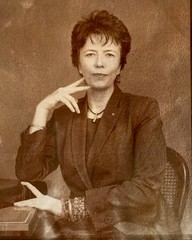‘Ironman’ triathlon is an endurance sport, which involves swimming, cycling and running. Competitors have 17 hours to complete a course of some 140 miles. For the last 8 years I have actively competed in ‘Ironman’ races all over the world. I have made many new friends in the sport. What has always struck me about these people is just how diverse they are. They do not conform to a stereotypical image of a super-fit athlete. I wanted to capture this through a series of portraits of my extended ‘Ironman Family’.
The way in which people behave when being photographed by a friend is usually conditioned by social conventions. People feel that they should smile and perhaps clown around. I did not want the portraits in ‘Ironman Family’ to come over in this way. My intention was for the portraits to be capable of convincing the viewer that they are seeing the subjects as they really are – natural and unposed.
My aim was to disrupt my subjects’ ‘normal’ expectations of how they should present themselves. I adopted a highly formalized approach using a portable studio. I gave them little direction, simply asking them not to smile, and to look into the lens. No longer able to ‘put on their usual act’, most were uncertain about how to present themselves and had to concentrate on their pose.
The series is typological. The subjects are pictured against a plain background, centered in the frame, standing square to the camera. The portraits are half or two thirds length and the lighting is plain. The subjects look directly at the viewer. Beforehand, I had asked each of them to wear something that signifies ‘Ironman’ for them. This could be anything from race kit to a simple finisher’s bracelet. The portraits were made in a variety of locations (both in the UK and overseas).
Rineke Dijkstra and Albrecht Tubke have been particular influences. Both of these photographers adopt subtle strategies for distracting their subjects from adopting a pre-determined pose. Dijkstra’s use of a large format camera acts as a form of distraction, because of the time it takes to set up. She says this way of working ‘demands great concentration from both the photographer and the person being photographed’. (Dijkstra 2012, pp 47). Tubke simply asks his subjects not to smile, after which he says ‘the situation of photographing the people changed immediately. People become aware that this is not a simple photograph, that this is something more.’ (Burbridge, 2010, pp10).
The photographs are presented as large exhibition prints (close to life size) to encourage the viewer to relate to the subjects as people. The frontal gaze invites the viewer to enter into a pseudo-social relationship with the subjects. The large prints also allow small nuances of expression, posture, gesture and dress to be scrutinised.
The presentation as a series, with each photograph having the same compositional structure, prompts comparison of the subjects portrayed. Whilst the series represents a particular group, i.e. my Ironman friends, it also invites speculation about the general nature of people who take part in endurance sports such as Ironman Triathlon, and about why people challenge themselves in this way. My hope is that the series will confront preconceived ideas viewers might have about how an endurance athlete should look.
Ironman Family is part of my broader inquiry into strategies portrait photographers use for ‘disarming the pose’ of their subjects.
Keith Greenough, April 2013
Burbridge B. (2010) Exacting Photography: Self-imaging and its frustration in contemporary art photography.[online]. Re.Bus Magazine edition 205: University of Essex. Available from: http://www.essex.ac.uk/arthistory/rebus/PDFS/Issue 5/Burbridge3.pdf 7th November 2012]
Dykstra, R. (2012), Rineke Dykstra: A Retrospective. New York: The Solomon Guggenheim Foundation
Ironman Family was exhibited at the [(6)] Exhibition at Bank Street Arts in Sheffield in July 2014.

![[(6)] Installation Bank Street Arts July 2014-1](https://keithgreenough.files.wordpress.com/2013/12/6-installation-bank-street-arts-july-2014-1.jpg?w=594&h=397)



K B
August 5, 2014
Interesting that all of the athletes are normal looking people but look athletic on the outside. I think it would have been more aspiring for you to have included those people that don’t physically look like your ironman triathlete. I happen to have a great friend who has to overcome this stigma everytime people find out she completed ironman. She’s over 200lbs but strong as can be and she has a heart of a champion.
Keith Greenough
August 5, 2014
Sure that would have been interesting but for me a different project. The idea behind this work was to make portraits of friends who are also fellow athletes. I did not specifically search out athletes who are challenged in any way. To be honest I am not sure I would want to go down that track. In my book all triathletes are equal and I would not want isolate a particular group who are in some way physically disadvantaged. Congratulations to your friend by the way!! Way to go.